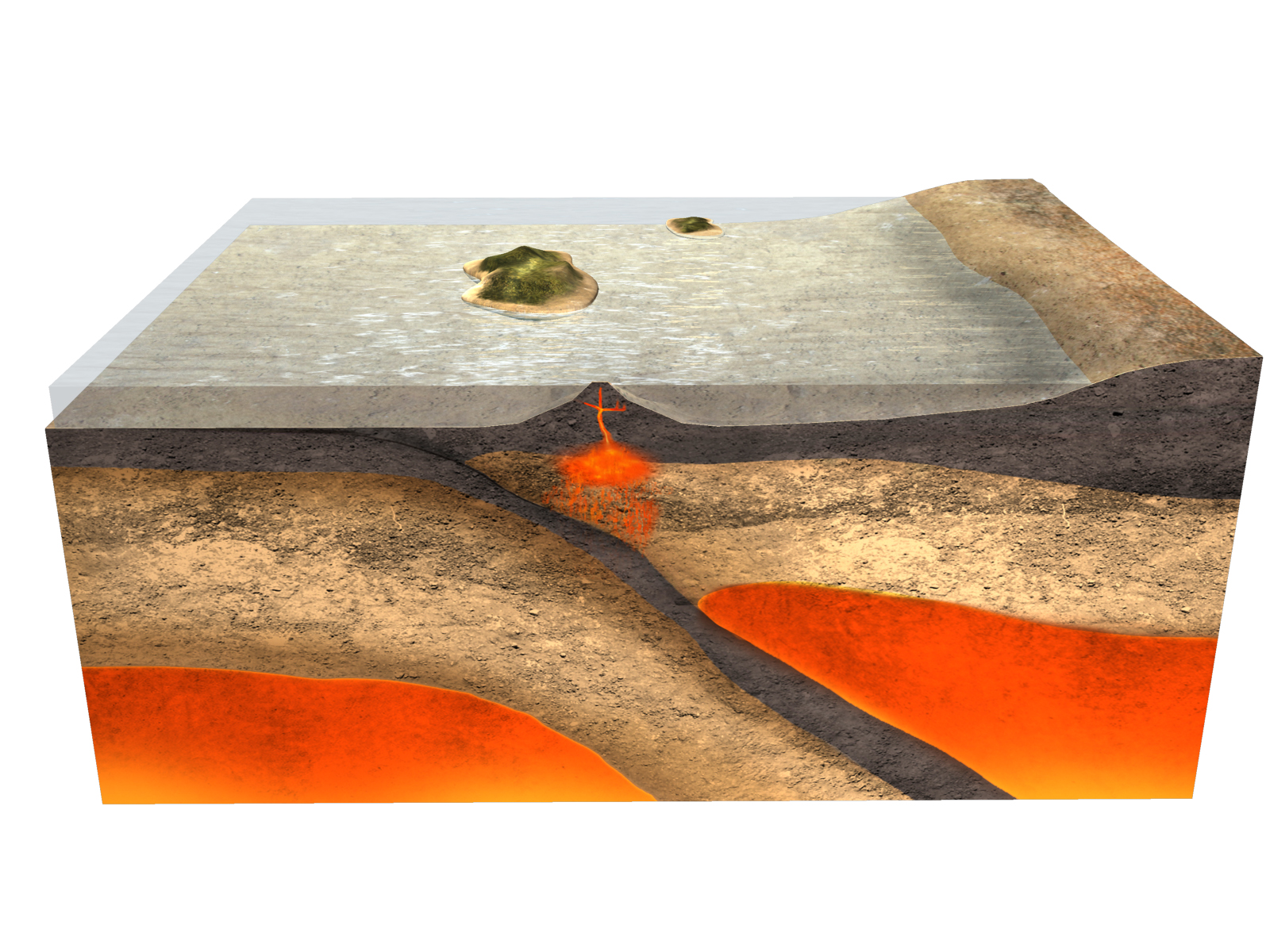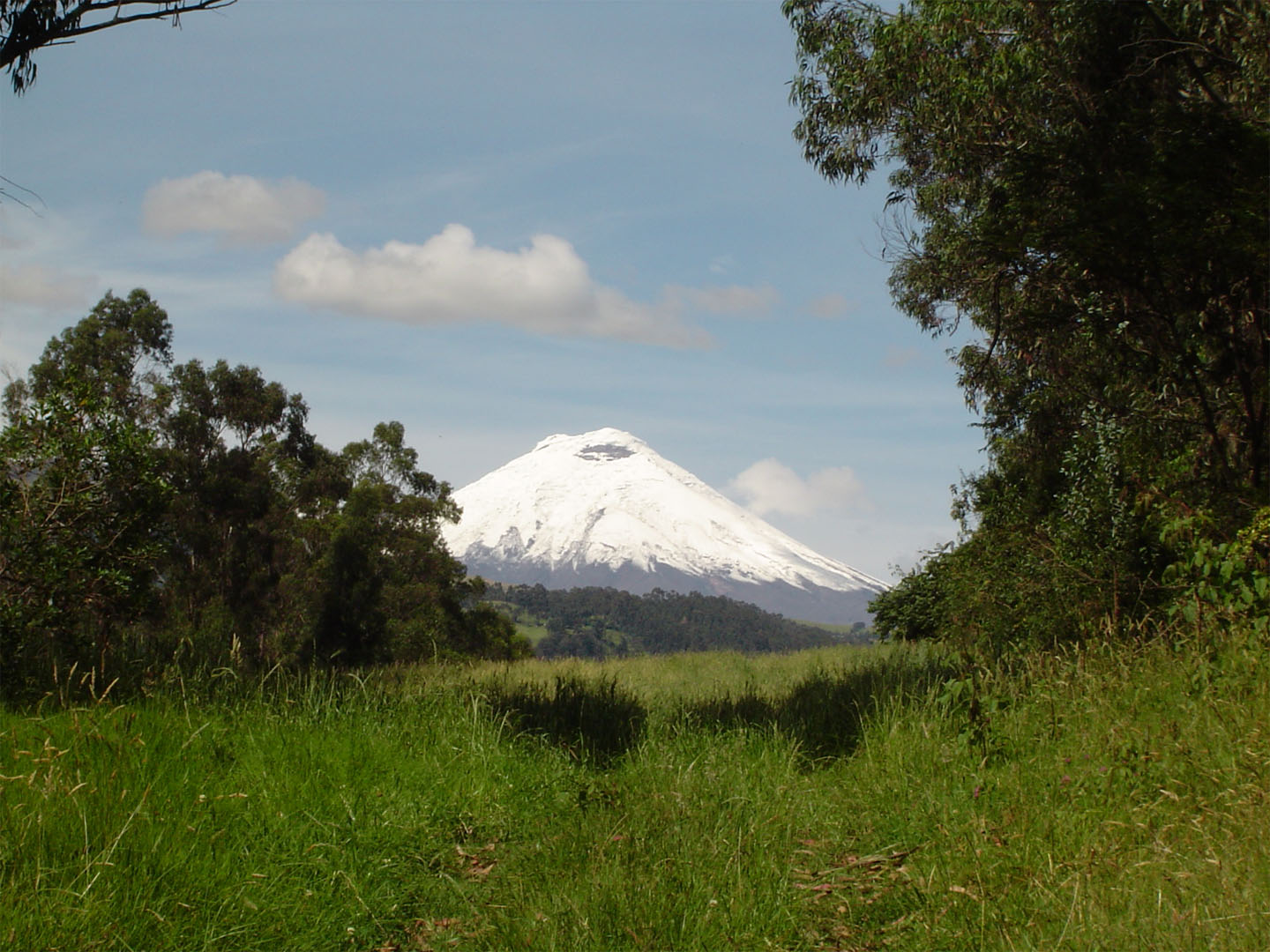Geologists have determined that volcanoes occur in three types of locations: convergent plates, divergent plates, and hot spots. The theory of plate tectonics (see Unit B: Plate Tectonics) is used to explain why volcanoes appear in certain locations.
Convergent Plates: When two plates collide or come together (converge), one plate moves under the other plate along the subduction zone. Oceanic crust, for example, will be subducted under continental crust. A deep trench forms on the ocean floor where the heavier oceanic crust moves below the lighter continental crust. Rising temperature, increased pressure, and the added effect of subducted water all combine to cause some of the sinking crust to become magma. This magma rises and forms volcanoes above the subduction zone. Where oceanic crust meets continental crust, volcanoes form along the continental margin. Many of the volcanoes in the Pacific Ring of Fire are formed this way.
If two oceanic plates converge, then volcanoes again form behind the trench. This time the volcanoes will be in the water, and will form a string of volcanic islands called an island arc. The Aleutian Islands off the coast of Alaska is an example of an island arc.
Convergent Boundaries
The introductory view to this lesson highlighted the formation of volcanoes in South America as a result of the convergence of the Nazca Plate and the South American Plate.
- Click here for a close-up view of the Nazca Plate and the South American Plate.
Central America also has many volcanoes that have formed as a result of converging plates.
- Click here to see the volcanoes of Central America.
- What plates are converging to form the volcanoes of Central America?
The convergence of the Cocos Plate and the Caribbean Plate has formed the volcanoes of Central America.
- Rotate the globe and locate at least two other examples where converging plates are forming volcanoes.
- List the names of the converging plates in your two examples.
Possible examples could include: Pacific Plate and North American Plate, Okhotsk Plate and Pacific Plate, Pacific Plate and Australian Plate.


